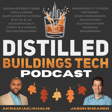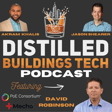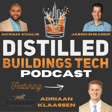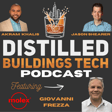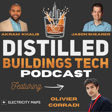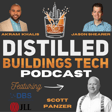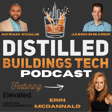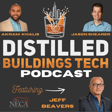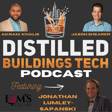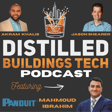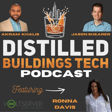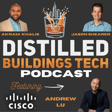
Welcome to the Distilled Buildings Tech Podcast: Shaken, Stirred, and Data-Driven
🔥 Episode Summary
In this inaugural episode, hosts Jason Shearer and Akram “AK” Khalis introduce themselves, share their journeys into smart building technology, and lay out the vision for the Distilled Buildings Tech Podcast.
From humble beginnings in engineering, real estate, and IT, to pioneering innovations in Power over Ethernet (PoE) lighting and infrastructure, Jason and AK discuss how their diverse backgrounds converge to make buildings smarter, more efficient, and truly connected.
They also reveal the podcast’s origin story (hint: bourbon-fueled conversations at Cisco Live Amsterdam 🍸), the structure for future episodes, and their mission to demystify smart buildings with insights from industry experts — and a good drink in hand.
🛠️ Topics Covered
- Jason and AK’s career paths into smart buildings and digital infrastructure
- How early experiences in real estate and engineering shaped their perspectives
- The evolution from incandescent lighting to LEDs and PoE systems
- How LED efficiency unlocked the future of building electrification
- The real meaning behind “smart buildings” vs. “smart systems”
- Why converging building systems onto a single network backbone matters
- The founding story of the Distilled Buildings Tech Podcast
- What listeners can expect each episode: Bourbon, Building Tech, and Big Ideas
🥃 This Episode’s Drinks
- AK: Basil Hayden Bourbon
- Jason: Leiper’s Fork Bourbon (Bottled in Bond) — dangerously smooth at 110 proof!
📅 Release Schedule
New episodes drop every other Monday — perfect for kicking off your week with a dose of bourbon and building innovation.
🎧 Who Should Listen?
- Building owners and developers
- Facility managers and real estate professionals
- Technologists and infrastructure teams
- Product manufacturers
- Bourbon enthusiasts with a passion for smarter spaces
📣 How to Support the Show
- Subscribe on Apple Podcasts, Spotify, Overcast, or YouTube
- Leave a review and share your thoughts
- Connect with Jason and AK on LinkedIn
- DM us questions or guest suggestions — we’re building this community together!
